Keeping track of small expenses can be challenging, especially when dealing with cash transactions. However, a petty cash log can help you meticulously track all transactions involving a small cash fund, ensuring transparency and accountability for small expenses.
In this article, we will explore what a petty cash log is, why it is important to use one, how to create and use it effectively, and provide examples and tips for successful implementation.
What is a Petty Cash Log?
A petty cash log is a document that allows you to record and track all transactions involving a small cash fund. It provides a clear and organized way to document the details of each expense, including the date, description, amount, and recipient.
By using a petty cash log, you can easily monitor and control the cash flow, ensuring that every transaction is accounted for.
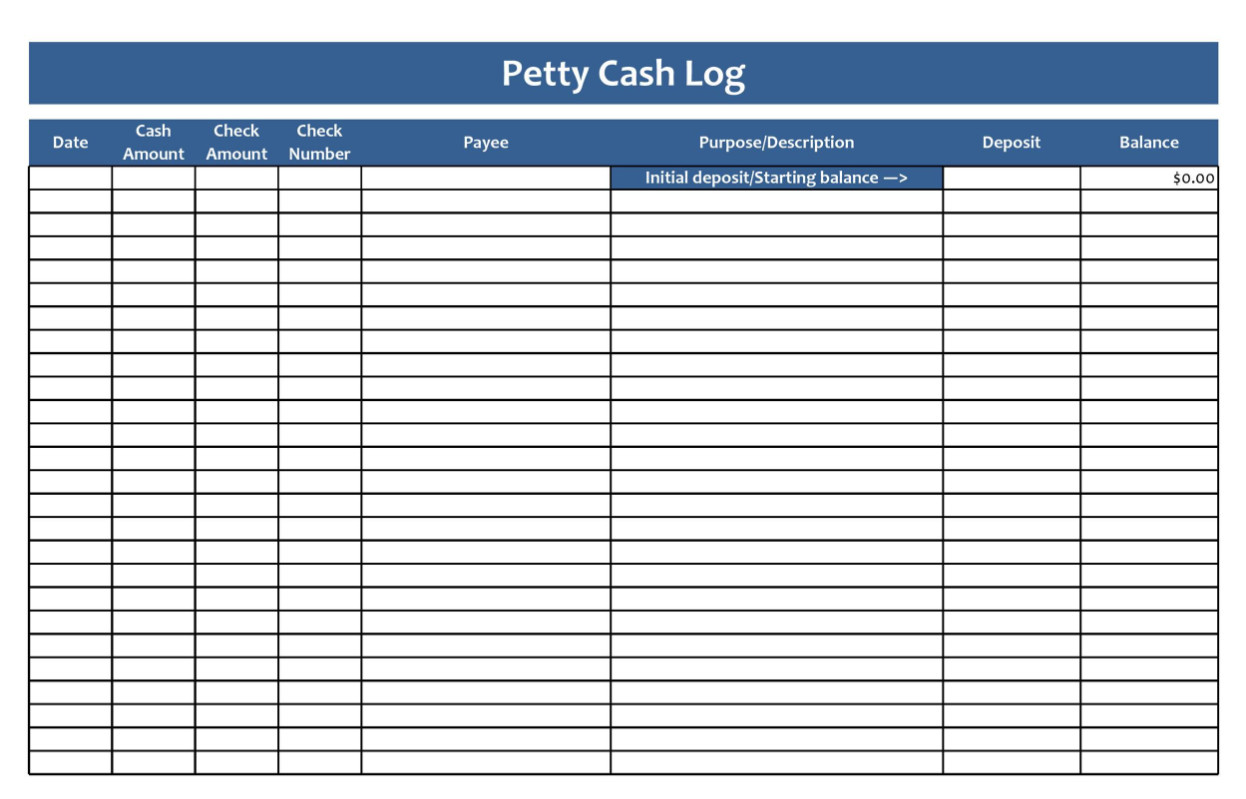
Why Use a Petty Cash Log?
Using a petty cash log offers several benefits:
- Transparency: A petty cash log promotes transparency by providing a clear record of all cash transactions. This allows for easy auditing and accountability.
- Accountability: With a petty cash log, it becomes easier to track who received the cash and for what purpose. This helps prevent any misuse or unauthorized expenses.
- Financial Control: By keeping a detailed record of small expenses, you can better manage your budget and make informed decisions about future spending.
- Efficiency: Using a petty cash log streamlines the process of recording and tracking cash transactions, saving time and effort.
How to Create and Use a Petty Cash Log
Creating and using a petty cash log is a straightforward process. Here are the steps to follow:
1. Design the Layout
Start by designing the layout of your petty cash log. You can use a spreadsheet software or simply create a table in a word processing document. Include columns for the date, description, amount, recipient, and any additional notes you may need.
2. Print Multiple Copies
Once you have designed the layout, print multiple copies of the petty cash log. This ensures that you always have a fresh log available whenever needed.
3. Set an Initial Cash Fund
Before starting to use the petty cash log, set an initial cash fund. This is the amount of cash you will keep on hand for small expenses.
4. Record Every Transaction
Whenever a cash transaction occurs, record it in the petty cash log. Include the date, description of the expense, amount spent, recipient, and any additional notes that may be relevant.
5. Replenish the Cash Fund
As the cash fund diminishes, replenish it by adding more cash. Make sure to record this replenishment in the petty cash log as well.
6. Regularly Review and Reconcile
Regularly review the petty cash log and reconcile it with the actual cash on hand. This helps identify any discrepancies or potential issues.
Examples of Petty Cash Logs
Here are a few examples of how a petty cash log can be designed:
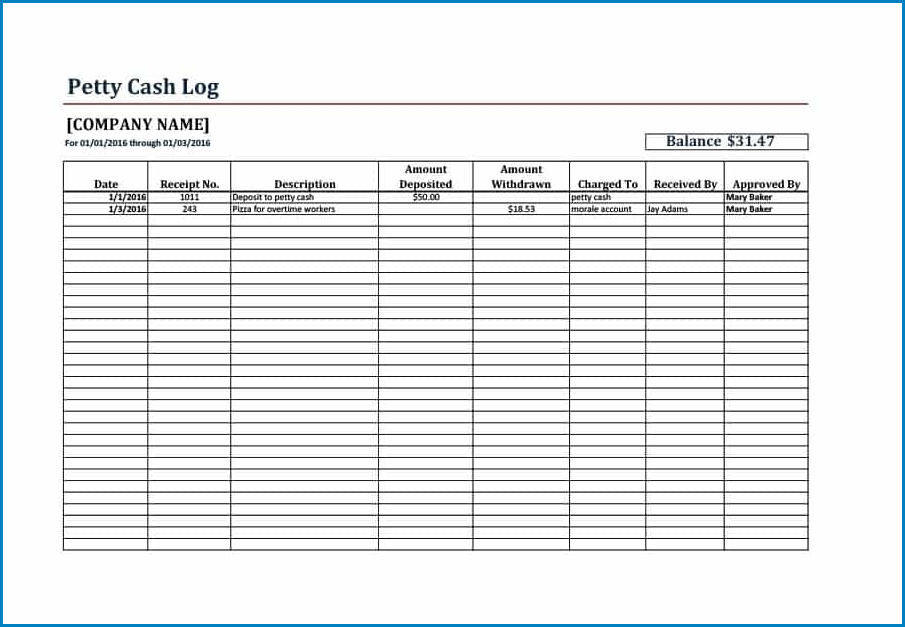
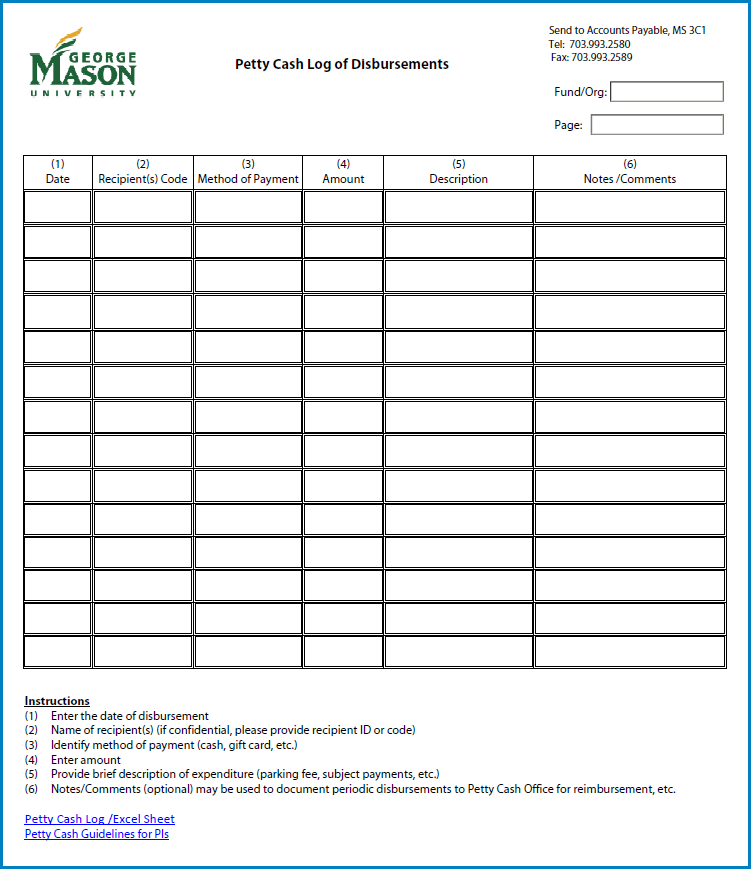
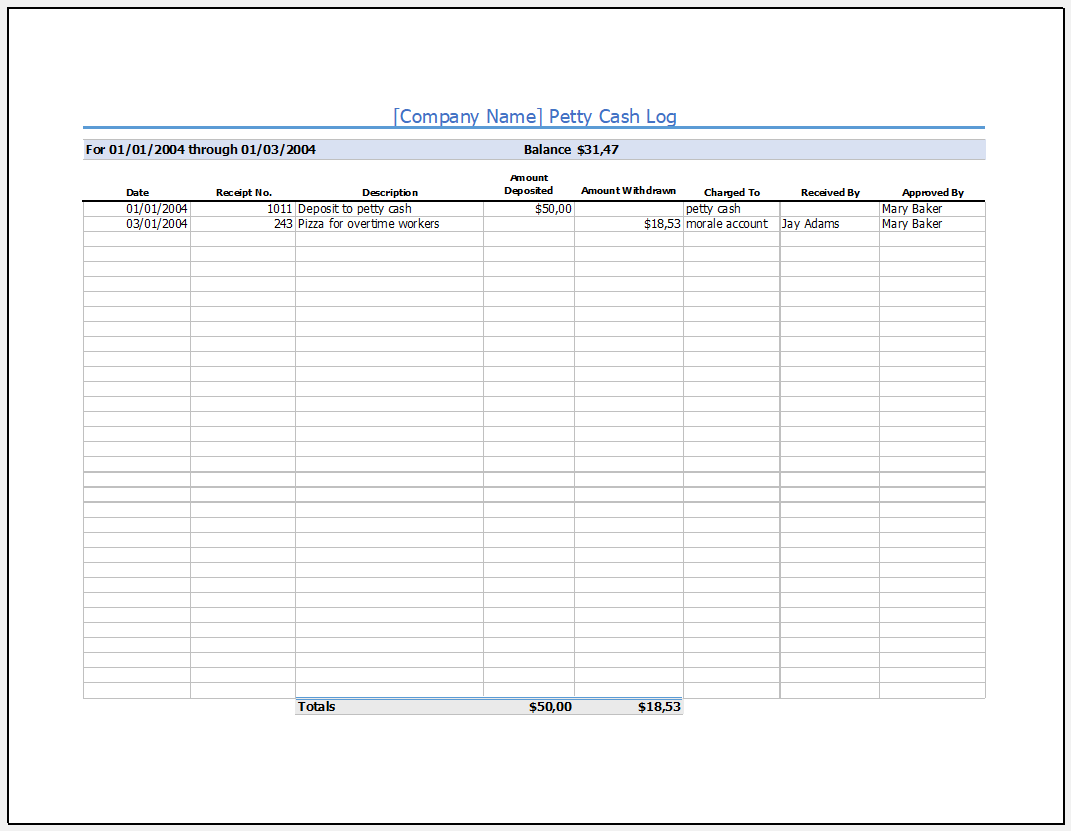
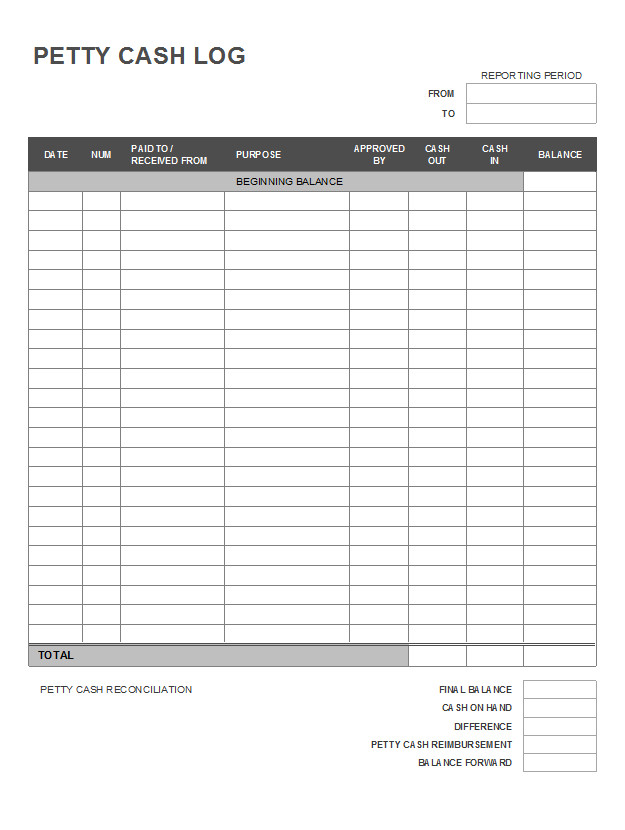
Tips for Successful Implementation
Here are some tips to ensure the successful implementation of a petty cash log:
- Keep it easily accessible: Store the petty cash log in a designated location that is easily accessible to everyone who needs to use it.
- Train employees: Provide training to employees on how to properly use the petty cash log and emphasize the importance of accuracy and accountability.
- Regularly audit: Conduct regular audits to ensure that the petty cash log aligns with the actual cash on hand.
- Review and update: Periodically review and update the petty cash log format to meet changing needs or requirements.
- Backup records: Make digital copies or backups of the petty cash log to avoid losing important information.
- Implement approval processes: Introduce an approval process for all petty cash transactions to ensure proper authorization.
- Communicate guidelines: Communicate the guidelines for using the petty cash log to all employees to avoid confusion or misuse.
- Use secure storage: Keep the physical petty cash log in a secure location to prevent unauthorized access.
- Regularly reconcile: Regularly compare the petty cash log with bank statements and financial records to reconcile any discrepancies.
- Keep it up to date: Make sure to record every transaction in the petty cash log immediately to maintain accuracy.
In Conclusion
A petty cash log is a valuable tool for meticulously tracking all transactions involving a small cash fund. By using this log, you can ensure transparency and accountability for small expenses, ultimately leading to better financial control and decision-making.
Implementing a petty cash log is a simple yet effective way to manage your small cash transactions and maintain a clear record of all expenses.
Petty Cash Log Template – Download